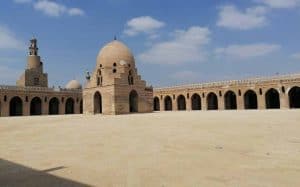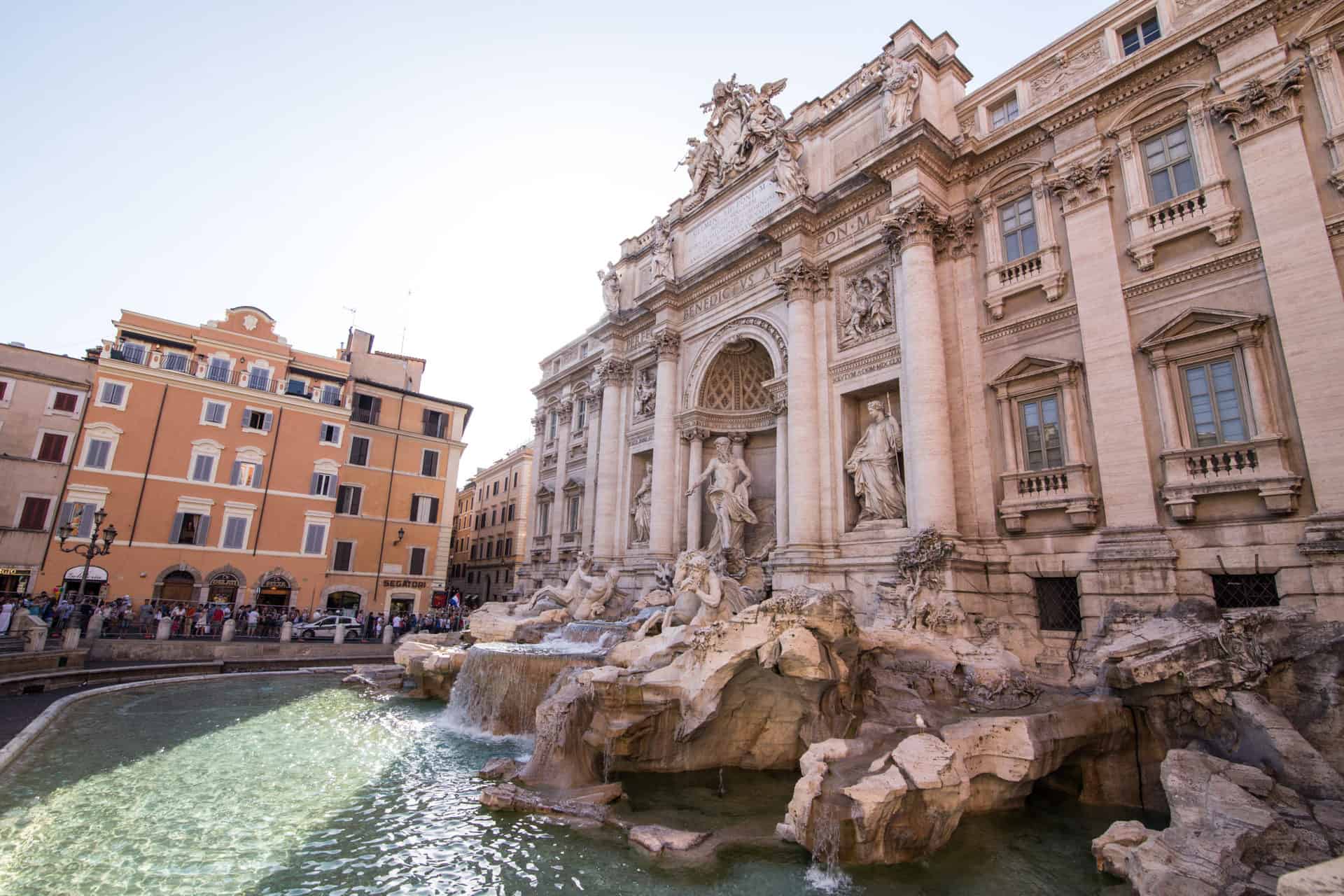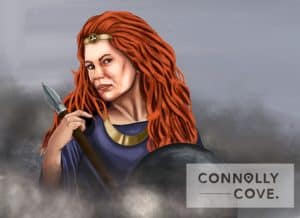Irish Diaspora and Cultural Fusion: Examining Global Influences of Irish Immigrants

Updated On: May 01, 2024 by Eman Sameh
The legacy of the Irish diaspora is a testament to the enduring impact of migration on global culture. Throughout history, the Irish have migrated across the world, taking with them a rich tapestry of cultural practices, stories, and traditions. As these immigrants settled in new lands, they did not simply assimilate; they contributed to and often significantly altered the local cultures, leading to a fascinating fusion of customs and identities. This cultural synthesis has manifested itself in various ways, from the culinary arts to musical expression, and continues to shape contemporary societies worldwide.

Irish influence can be found in the far corners of the world, where the notion of Irishness has been interwoven with local narratives to create unique cultural expressions. The exchange is reciprocal; while the Irish have introduced elements of their heritage to new environments, these encounters have also reshaped Irish identity abroad. In addition to cultural contributions, the economic, social, and technological impacts of the Irish diaspora have played a key role in shaping communities, economies, and infrastructure development beyond Ireland’s shores. This ongoing exchange stands as a vibrant dialogue between the past and present, highlighting the fluid nature of cultural identity in a globalised world.
Historical Context of Irish Diaspora
In tracing the Irish diaspora, we observe profound moments of history that propelled the dispersion of Irish people across the globe. Two significant periods stand out for their extensive impact on Irish emigration.
The Great Famine and Emigration
The catastrophic event known as the Great Famine (An Gorta Mór) between 1845 and 1852 was a pivotal moment in Irish history. A blight ravaged the potato crop, which was a staple food for a majority of the population, resulting in mass starvation and disease. Consequently, over a million people perished, and a similar number sought refuge abroad, predominantly in North America but also in Britain, Australia, and other parts of the world. This exodus due to the famine marked the beginning of a large-scale Irish emigration, leaving a lasting imprint on the countries where they settled and on Ireland itself.
Irish Emigration Patterns
Post-famine, Irish emigration patterns reflected a variety of push-and-pull factors. The economic conditions in Ireland, including a lack of industrial development, coupled with the allure of better opportunities overseas, continued to drive Irish men and women to seek lives elsewhere. The 1950s and 1980s saw two significant yet lesser integrated phases of Irish migration due to economic pressures. Subsequently, the 2008–2010 economic crisis triggered another notable wave of emigration. These patterns of migration have disseminated Irish culture worldwide, leaving marks on societies far from the shores of Ireland.
Cultural Identity and Expression
In exploring the widespread influence of the Irish diaspora, we observe a profound impact on cultural identity and expression. The arts are a vibrant ambassador of Irish heritage, ensuring that Irishness is celebrated and integrated into various cultures worldwide.
Art and Literature
Irish art and literature carry a richness that transcends boundaries. The visual arts, often steeped in folklore, reflect a deep connection to Irish traditions. Literary contributions from the likes of James Joyce and W.B. Yeats have earned critical acclaim and left an indelible mark on Irish literature. These works embody the complexity of Irish identity and often explore themes of displacement and belonging, echoing the experiences of immigrants.
Music and Dance
We can hardly speak of Irish cultural expression without mentioning the unmistakable rhythms of traditional Irish music or the percussive precision of Irish dance. Both have achieved global recognition, not only as entertainment but as profound representations of Irishness. Music sessions featuring the fiddle, tin whistle, and the bodhrán celebrate communal storytelling, while dance shows like “Riverdance” have brought the energy of Irish dance to an international audience.
Language and Storytelling
The Irish language, though less commonly spoken, holds a special place in the expression of cultural identity, influencing the narrative style of Irish storytelling. English, with its own Irish flavour, has also been significantly shaped by its Irish speakers, lending itself to the literary genius of authors and poets. Oral traditions, rich with tales of myth and legend, continue to be a bedrock of Irish culture, preserving the essence of Irishness through story.
Socio-Economic Factors

In our exploration of the Irish diaspora, the socio-economic factors are pivotal in understanding how Irish immigrants have integrated and influenced societies globally.
Irish Immigrants and Jobs
Irish immigrants historically sought jobs that would provide economic stability for themselves and their families. The migration patterns were often driven by necessity, as many fled from poverty or famine—in particular, the devastating Great Famine of the mid-19th century. Upon arrival in new lands, they frequently took on work that was physically demanding and less well-paid, such as in construction, domestic service, or as unskilled labour in burgeoning industries. By filling these roles, Irish immigrants contributed significantly to the labour force, particularly in cities like New York, Boston, and London.
Economic Contributions
The economic contributions of Irish immigrants are evident in various sectors. They have been instrumental in several key industries, including railroad construction in the United States and coal mining in the UK, helping to catalyse industrial growth during the 19th and 20th centuries. Their impact extends beyond mere labour; Irish emigrants sent remittances back home, playing a critical role in supporting the Irish economy. Moreover, Irish immigrants and their descendants have ascended the social and economic hierarchy over time, assuming prominent positions in business, politics, and culture, thereby enriching the economic tapestry of their adopted countries.
Influence on Global Cultures
The Irish diaspora has notably influenced the cultures of various countries around the world. Irish immigrants have left their mark on societies from America to Australia through a blend of tradition and integration.
Irish Impact in America
The influence of Irish immigrants on American culture is profound and multifaceted. In the United States, St. Patrick’s Day is a prominent example, celebrated nationwide with parades, green attire, and public festivities that highlight the Irish-American identity. Additionally, the contributions of the Irish in the political realm, from Kennedy’s presidency to local leaders, demonstrate the irrefutable impact of the Irish on American political life.
The Irish have also greatly contributed to the construction of American cities, with a workforce instrumental in projects like the building of canals and railroads. This labour not only reshaped America’s infrastructure but also signified Irish tenacity in the face of adversity. Tracing the achievements of the Irish in America, from political offices to cultural celebrations, uncovers the depth of their integration and their role in shaping the USA as a nation.
Irish Influence in Britain
Our neighbour, Britain, has also felt our cultural influence. As one of the first destinations for Irish emigrants, Irish communities have been pivotal in shaping several British cities. Liverpool, for instance, is often described as having a strong Irish heritage, with its own unique Irish-American community, which influenced everything from local accents to social clubs and pubs.
It is remarkable to recognise the extent to which Irish culture has permeated British society through music, dance, and literature. The likes of W.B. Yeats and Oscar Wilde greatly contributed to Britain’s literary landscape, highlighting a mutual cultural enrichment between our nations.
The Irish in Australia and New Zealand
Moving to the Southern Hemisphere, the influence of the Irish in Australia and New Zealand through both settlement and cultural infusion is unmistakable. Major cities such as Sydney and Melbourne are known for their St. Patrick’s Day parades, which respect our shared history and connection with Irish emigration’s past.
Irish influence is also seen in sporting sectors, with sports such as Gaelic football and hurling establishing themselves within these nations. This exportation of part of our culture fosters a sense of community and retains ties to Irish heritage. In New Zealand, the Irish have contributed to agricultural success through knowledge exchange and labour, further demonstrating the versatility and adaptability of the Irish in global societies.
Cultural Fusion and Heritage
The cultural contributions of the Irish diaspora have woven a rich tapestry of heritage across the globe, merging with the local fabrics of food, celebration, and belief systems.
Food and Drink
Food: The Irish have left an indelible mark on the food culture worldwide. In countries like the US and Australia, traditional dishes such as Irish stew and soda bread have been adopted and adapted, merging with local tastes to create fusion cuisine that celebrates our shared heritage.
Drink: Irish pubs have become cultural institutions globally, and with them, the beverages of our homeland have flowed freely. Our celebrated Irish whiskey now claims a coveted spot in the world’s spirits sector, appreciated for its quality and tradition.
Celebrations and Traditions
Our celebrations and traditions have transcended borders. Saint Patrick’s Day has been embraced worldwide, not just as an Irish festival but as a universal celebration of cultural heritage. It’s a day where everyone can appreciate and partake in the jovial spirit and collaborative festivities that define our heritage.
Religion and Beliefs
Irish missionaries and immigrants have spread their religion and beliefs far and wide. These complex, intertwined faith practices have been both preserved in their original form and blended with local traditions to yield a diverse religious landscape that still carries the echoes of Irish influence.
Contemporary Issues in Diaspora
In examining the Irish diaspora, we observe emerging complexities concerning identity formation and political engagement within host societies.
Identity and Assimilation
The interplay of identity and assimilation poses a significant challenge for the Irish diaspora. As individuals navigate their existence within American society and other ethnic groups, the pressure to assimilate can sometimes lead to a dilution of their Irish heritage. Conversely, a strong diasporic community can foster a distinct sense of identity, as evidenced by the celebration of St. Patrick’s Day, which anchors Irish-American identity within a multicultural landscape.
Politics and Representation
Politics and representation in relation to Irish immigrants underscore the dual challenge of gaining political influence while maintaining cultural uniqueness. Active participation in the political realm has been a way for the diaspora to secure rights and representation, reflecting their significance within society. Whether it’s involvement in local community networks or national politics, securing citizenship often translates into power and a voice for ethnic groups within the larger socio-political tapestry.
Preservation of Irish Heritage Abroad
The Irish diaspora has consistently worked to preserve and promote Irish heritage around the world. In our efforts to maintain a connection to our roots, various entities have been established, playing a critical role in the cultural memory of Irish communities abroad.
Museums and Cultural Institutions
We have seen the establishment of institutions dedicated to celebrating Irish heritage, such as museums and heritage centres. These venues provide a space for the Irish community to connect with their history. They house exhibits on Irish migration, art, and cultural artefacts. For instance, institutions like the Irish American Heritage Center in Chicago serve as hubs of cultural activity, offering a broad array of programmes from music and dance to language classes, all with the aim of keeping Irish traditions alive.
Irish Studies and Education
Education plays a pivotal role in the preservation of Irish heritage. Irish studies programmes at universities worldwide delve into Ireland’s rich history, literature, and Gaelic language. Through these academic courses, teachers and students explore the depths of Irish cultural heritage. The dedication to educating future generations ensures that the essence of Irish identity and memory perseveres. It’s through such educational efforts that the legacy of the Irish people continues to influence global cultures.
Cultural Commodification and Tourism

We explore the complex relationship between cultural commodification and tourism, and how the Irish tradition and identity have been transformed into marketable commodities that attract tourists worldwide.
The Business of Heritage
In recent years, there’s been a surge in recognising the value of cultural heritage as a commodity within the tourism industry. We’ve witnessed how Irish culture has been packaged and sold, from lively pub experiences to leprechaun-themed memorabilia. This phenomenon has significant economic implications, as it creates a marketplace for cultural expression and supports local economies. Visitors are invited to experience a taste of Ireland through activities and souvenirs, contributing to a perception of Irishness that, while arguably superficial, has nonetheless become deeply ingrained in tourist expectations.
Tourism and ‘The Gathering’
‘The Gathering’ stands as a testament to the power of cultural heritage in driving tourism. It was a tourism-led initiative that invited those of Irish descent to visit and reconnect with their homeland. Through this event, Ireland showcased not just its landscapes and history but also the warmth of its people and the vibrancy of contemporary Irish society. By doing so, ‘The Gathering’ highlighted the fluid nature of cultural heritage, as it bridges the past with the present, making it a dynamic part of Ireland’s tourism appeal. Such initiatives leverage the strong sense of community and belonging that many people of Irish ancestry seek, fulfilling both a yearning for connection and a curiosity about their heritage.
Technology and Infrastructure

In the fabric of global societies, Irish immigrants have woven threads of innovation and development, most notably within the realms of technology and infrastructure. Our section elucidates the pivotal contributions of the Irish diaspora in these crucial aspects of modernity.
Modern Communication
With the advent of contemporary communication technologies, Irish expatriates have both contributed to and benefitted from the digital revolution, ensuring that messages and cultural exchanges flow seamlessly across continents. The development of infrastructure, such as broadband networks, has been influenced by the knowledge and expertise of Irish professionals abroad. They have been integral in the construction and maintenance of the physical and digital networks that underpin our interconnected world.
Cultural Infrastructure Abroad
Our contributions to cultural infrastructure in other nations have been substantial. We have helped establish numerous institutions which serve as cultural beacons for the Irish community and international audiences. These range from Irish cultural centres that preserve and promote Irish heritage to academic institutions where the narrative of our diaspora is studied and understood in a broader context.
By forging and fostering such institutions, we do more than just build edifices; we create networks that support the ongoing exchange and evolution of our rich Irish culture on a global stage.
Future Directions and Potential

The diaspora’s expanding influence on Ireland’s economic landscape and the potency of cultural diplomacy hint at a promising horizon. Utilising our shared heritage and diverse expressions, we anticipate a future where the global impact of the Irish diaspora solidifies and stretches even further.
Diaspora’s Role in Ireland’s Economy
The Irish diaspora wields significant potential in shaping Ireland’s future economy. Leveraging their position in international markets, they can foster trade relationships and unearth investment opportunities. By reconnecting with the homeland, the diaspora could bolster tourism and even encourage a transfer of knowledge and expertise that benefits key sectors like technology, education, and healthcare.
The Power of Cultural Diplomacy
Through cultural diplomacy, the Irish abroad serve as informal ambassadors, and their narratives and interactions promote our values and build soft power. This soft power could open doors for dialogues across cultures, influencing foreign policy in subtle yet profound ways. By celebrating our rich heritage on the global stage, we nurture international relations and enhance our global impact.
The future presents us with the potential to harness this far-reaching influence of the diaspora. As we step into an era of interconnectivity, this untapped resource could prove pivotal in reinforcing Ireland’s presence as a key player on the world stage. It’s an opportunity rooted in our past yet pivotal to our future.
Frequently Asked Questions
In this section, we explore the impact of Irish immigrants on cultures worldwide, highlighting traditions, contributions to global culture, and historical patterns of immigration.
What are the predominant cultural traditions introduced by Irish immigrants in America?
Irish immigrants brought with them an array of cultural traditions that have become woven into the American fabric. Notably, St. Patrick’s Day festivities showcase the epitome of Irish-American culture, with parades and the wearing of green symbolising this influence. Additionally, the proliferation of Irish music and dance, particularly the famous Riverdance, has left a lasting mark.
How have Irish immigrants contributed to global culture?
Globally, Irish immigrants have infused their rich cultural heritage into numerous countries. They’ve been instrumental in establishing institutions like pubs, which serve as social hubs, and shared their folklore and storytelling, which has contributed to the world’s literary wealth. The influence of The Irish Diaspora on arts is undeniable, with traditional Irish music becoming a cherished genre in various corners of the world.
What are some notable health practices introduced by Irish Americans?
Complementary and holistic health practices have been a notable contribution to the Irish-American community. Methods ranging from herbal remedies to natural preventive care have their roots in traditional Irish wellness wisdom. These approaches often emphasise the harmony of mind and body, correlating with the broader acceptance of naturopathy in modern healthcare.
Which notable figures in American history were of Irish descent?
Our American narrative is peppered with key figures of Irish descent who have shaped the nation. These include President John F. Kennedy, whose Irish roots influenced his identity and politics, and industrialist Henry Ford, whose ancestors hailed from Ireland. Labour activist Mother Jones is another significant figure, having played a pivotal role in organising workers’ rights movements.
How did the patterns of Irish immigration and settlement change following 1852?
After 1852, Irish immigration patterns shifted from being primarily male-dominated to family-centred migrations. This change was due in part to the diminishing need for immediate manual labour. Irish communities started to establish themselves in a more settled manner, with families contributing significantly to the religious, educational, and social institutions in their new homelands.
In which regions or districts were Irish immigrants primarily concentrated during the mid-19th century?
During the mid-19th century, Irish immigrants in America were mostly concentrated in the Northeast, particularly in cities like New York, Boston, and Philadelphia. Such locales provided the Irish with an abundance of employment opportunities, and over time, these areas became known for their vibrant Irish-American communities.






